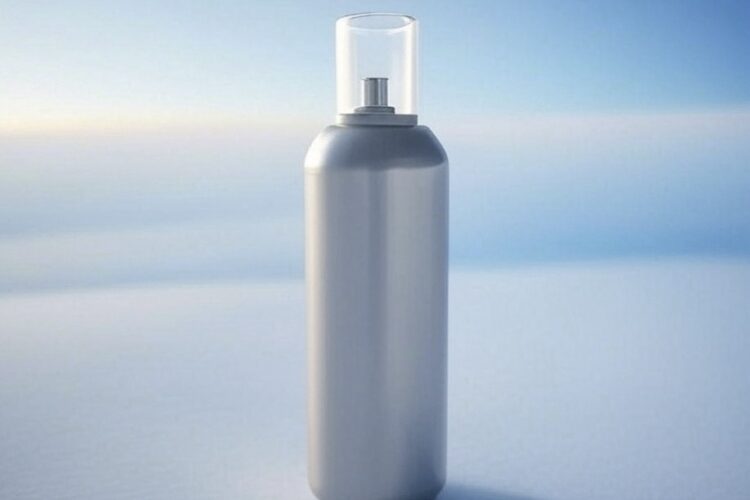Canned oxygen, or portable oxygen canisters, delivers compressed, high-purity oxygen for medical, recreational, and wellness use. Ideal for respiratory support, it helps manage conditions like COPD or altitude sickness, boosts sports recovery, and enhances energy in low-oxygen environments. Available in lightweight, non-prescription canisters, brands like Boost Oxygen offer easy inhalation via masks or nozzles. Benefits include improved oxygen saturation, reduced fatigue, and cognitive clarity, though evidence for healthy users is mixed. Safety requires proper storage to avoid fire risks, and FDA regulations ensure medical-grade quality. Popular in mountaineering, aviation, and oxygen bars, canned oxygen is a growing trend in the wellness industry. However, it’s not a cure for medical issues, and environmental concerns arise from disposable canisters. As demand rises, innovations like sustainable packaging may shape its future.
Long Version
In recent years, canned oxygen has emerged as a versatile product, bridging the gap between medical necessity and lifestyle enhancement. From aiding those with respiratory health issues to boosting aerobic performance for athletes, portable oxygen canisters have found a place in diverse settings, including high-altitude adventures, wellness routines, and even oxygen bars. This in-depth article explores every facet of canned oxygen, from its science and applications to its benefits, safety considerations, and market trends, providing a complete and authoritative resource on the subject.
What is Canned Oxygen?
Canned oxygen, also known as portable oxygen or oxygen canisters, refers to compressed oxygen stored in lightweight, pressurized containers for easy inhalation. Unlike oxygen concentrators or large oxygen cylinders used in medical settings, these canisters are designed for portability and convenience, delivering supplemental oxygen to users in various scenarios. Typically containing medical-grade oxygen or recreational oxygen with high oxygen purity (often 90-95% or more), these products are marketed for both health and performance purposes.
The concept is simple: users inhale oxygenated air through a nasal cannula, oxygen mask, or directly from the canister’s nozzle, increasing their oxygen saturation (SpO2) levels. This can help alleviate symptoms of hypoxia (low oxygen levels), enhance cognitive enhancement, or provide an anti-fatigue oxygen boost during physical exertion.
The Science Behind Canned Oxygen
Oxygen is essential for human survival, powering cellular respiration and maintaining bodily functions. At sea level, the air contains approximately 21% oxygen, but factors like air quality, high altitudes, or respiratory conditions can reduce available oxygen, leading to oxygen depletion. Canned oxygen addresses this by delivering a concentrated dose of inhalable oxygen, which raises blood oxygen levels and supports respiratory support.
For individuals with conditions like chronic obstructive pulmonary disease (COPD) or acute respiratory distress, oxygen therapy is a medical necessity. However, recreational oxygen appeals to healthy individuals seeking benefits like improved sports recovery, increased energy, or relief from altitude sickness. Studies suggest that supplemental oxygen can enhance aerobic performance, reduce fatigue, and improve mental clarity, though results vary based on individual health and environmental factors.
Pulse oximetry, a method to measure oxygen saturation, is often referenced in discussions about canned oxygen. Normal SpO2 levels range from 95-100%; levels below this may indicate a need for oxygen supplementation. By providing oxygen-enhanced exercise or recovery, canned oxygen supports users in maintaining optimal performance and well-being.
Applications of Canned Oxygen
Medical Use
For individuals with respiratory conditions, canned oxygen serves as an emergency oxygen solution or a portable alternative to bulky oxygen tanks. It’s particularly useful for managing symptoms of COPD, asthma, or other conditions requiring oxygen therapy. While not a substitute for prescribed oxygen concentrators, these canisters offer convenience for short-term use, such as during travel or outdoor activities. FDA regulation ensures that medical-grade oxygen meets strict safety and purity standards.
High-Altitude Activities
At high elevations, where oxygen levels drop significantly, altitude sickness can cause headaches, nausea, and fatigue. Canned oxygen is a staple for mountaineering, skiing, and high-altitude training, providing oxygen supply to combat hypoxia. Products like Boost Oxygen and O2 Blast are popular among adventurers, offering portable oxygen devices that fit easily into backpacks.
Sports and Fitness
Athletes use canned oxygen for sports recovery and oxygen-enhanced exercise. By increasing oxygen flow rate during or after intense workouts, it may reduce muscle fatigue and improve endurance. Some brands market oxygen for energy, claiming it supports aerobic performance and accelerates recovery, though scientific evidence on these benefits in healthy individuals is mixed.
Wellness and Lifestyle
The rise of oxygen bars and wellness industry trends has popularized recreational oxygen for relaxation and cognitive enhancement. Consumers use oxygen canisters to combat fatigue, improve focus, or enhance mood, particularly in urban areas with poor air quality. Oxygen vending stations and retail products cater to this growing demand, positioning canned oxygen as a lifestyle accessory.
Aviation and Emergency Preparedness
In aviation, canned oxygen is used by pilots and passengers in unpressurized aircraft to prevent oxygen depletion at high altitudes. It’s also a key component of emergency oxygen kits for first responders or disaster preparedness, offering a reliable oxygen supply in critical situations.
Benefits of Canned Oxygen
The appeal of canned oxygen lies in its versatility and accessibility. Key benefits include:
- Portability: Lightweight and compact, oxygen canisters are easy to carry, unlike traditional oxygen cylinders.
- Ease of Use: No prescription is required for non-prescription oxygen, making it accessible to a wide audience.
- Immediate Relief: For symptoms of altitude sickness or fatigue, canned oxygen provides quick respiratory support.
- Versatility: From medical to recreational use, it caters to diverse needs, including oxygen therapy benefits and lifestyle enhancement.
- Safety: When used correctly, oxygen safety is high, with minimal risk of side effects.
However, users should be aware that canned oxygen is not a cure for underlying medical conditions and should complement, not replace, professional treatment.
Safety and Regulatory Considerations
While canned oxygen is generally safe, proper use is critical to avoid risks. Oxygen safety guidelines include storing canisters away from heat sources, as pressurized canisters can pose a fire hazard. Users should also verify the shelf life of the product, as oxygen storage conditions affect longevity.
In the U.S., FDA regulation oversees medical-grade oxygen, ensuring it meets purity and safety standards. Recreational oxygen, however, is often classified as a consumer product and may face less stringent oversight. Consumers should choose reputable brands like Boost Oxygen or O2 Blast, which prioritize oxygen purity and transparent labeling.
Individuals with respiratory conditions should consult a healthcare provider before using canned oxygen, as improper use may mask serious symptoms. Additionally, oxygen therapy should not be confused with ozone therapy or hyperbaric oxygen, which involve different mechanisms and applications.
Market Trends and Popular Brands
The canned oxygen market has grown significantly, driven by demand in the wellness industry, outdoor recreation, and healthcare. Oxygen marketing emphasizes benefits like anti-fatigue oxygen, cognitive enhancement, and oxygen for energy, appealing to health-conscious consumers. Retail giants and specialized oxygen vending platforms have made these products widely available, with consumer oxygen products sold in pharmacies, outdoor stores, and online.
Leading brands include:
- Boost Oxygen: Known for its range of oxygen canisters in various sizes and flavors, marketed for sports, travel, and wellness.
- O2 Blast: Focuses on recreational oxygen for fitness and recovery, emphasizing oxygen purity.
- Oxygen Plus: Targets the lifestyle market, promoting oxygen-enhanced exercise and mental clarity.
The global market is also expanding, with oxygen in retail becoming a common sight in countries like Japan and China, where environmental oxygen levels are a concern due to pollution.
Limitations and Controversies
Despite its popularity, canned oxygen is not without skepticism. Critics argue that healthy individuals may not experience significant benefits from supplemental oxygen, as the body is typically efficient at maintaining oxygen saturation. Scientific studies on recreational oxygen are limited, and claims about aerobic performance or cognitive enhancement may be overstated.
Additionally, the environmental impact of disposable oxygen cartridges raises concerns. While some brands offer recyclable canisters, the production and disposal of pressurized canisters contribute to waste. Cost is another factor, as frequent use of canned oxygen can be expensive compared to other wellness solutions.
The Future of Canned Oxygen
As awareness of respiratory health grows, canned oxygen is poised for further innovation. Advances in oxygen delivery technology may lead to more efficient portable oxygen devices, while research could clarify the benefits of oxygen supplementation in healthy populations. The integration of canned oxygen into mainstream healthcare, fitness, and travel industries suggests a bright future, with potential applications in oxygen therapy benefits and beyond.
Emerging trends include:
- Smart Oxygen Devices: Canisters with sensors to monitor oxygen flow rate or SpO2 levels.
- Sustainable Packaging: Eco-friendly oxygen storage solutions to reduce environmental impact.
- Personalized Oxygen: Tailored oxygen purity levels for specific activities, such as high-altitude training or sports recovery.
Conclusion
Canned oxygen represents a unique intersection of science, health, and lifestyle, offering supplemental oxygen for a wide range of users. Whether combating altitude sickness, supporting respiratory health, or enhancing aerobic performance, portable oxygen canisters provide a convenient and accessible solution. By understanding its applications, benefits, and limitations, consumers can make informed decisions about incorporating canned oxygen into their lives.
As the market continues to evolve, canned oxygen will likely remain a staple in the wellness industry, outdoor recreation, and healthcare. With proper use and realistic expectations, it can serve as a valuable tool for improving oxygen levels, boosting energy, and enhancing quality of life. For those interested in exploring canned oxygen, reputable brands and adherence to oxygen safety guidelines ensure a positive and effective experience.
Hashtags For Social Media
#cannedoxygen #portableoxygen #oxygenboost #altitudesickness #respiratoryhealth #oxygentherapy #sportsrecovery #wellnessjourney #highaltitude #mountaineering #oxygenforenergy #breathebetter #oxygenpurity #fitnessrecovery #healthandwellness #outdooradventure #aviationlife #emergencyoxygen #copdsupport #oxygenflow #mentalclarity #wellnessindustry #oxygenbar #travelessentials #hypoxiarelief #aerobicperformance #oxygenvending #boostoxygen #recreationaloxygen #respiratorysupport
Related Questions, Words, Phrases
what is canned oxygen | how does canned oxygen work | benefits of canned oxygen | canned oxygen for altitude sickness | is canned oxygen safe to use | where to buy canned oxygen | canned oxygen for sports recovery | can canned oxygen help with copd | how to use a canned oxygen canister | what’s the best canned oxygen brand | canned oxygen for high altitude training | does canned oxygen improve energy levels | canned oxygen vs oxygen concentrator | how long does canned oxygen last | canned oxygen for aviation use | can canned oxygen help with fatigue | what is the purity of canned oxygen | canned oxygen for respiratory health | how does canned oxygen affect oxygen saturation | canned oxygen for mountaineering benefits | is canned oxygen fda approved | canned oxygen for wellness and relaxation | how to store canned oxygen safely | canned oxygen environmental impact | what are the risks of canned oxygen | canned oxygen for emergency preparedness | does canned oxygen help with cognitive clarity | canned oxygen for oxygen therapy at home | how to choose canned oxygen for travel | canned oxygen for outdoor recreation | what is recreational canned oxygen | canned oxygen shelf life and storage tips | how does canned oxygen compare to oxygen bars | can healthy people use canned oxygen | canned oxygen for improving aerobic performance






